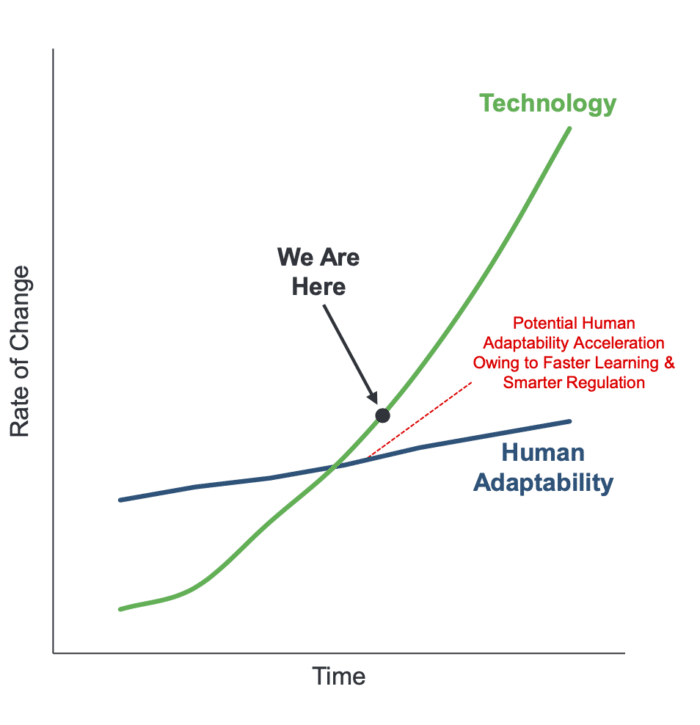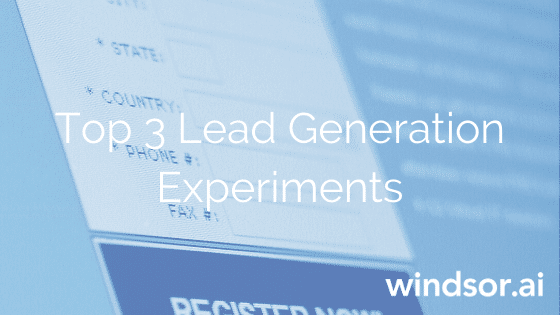The world is changing at a pace faster than ever.
Humans’ ability to adapt to technological change is increasing, but it is not keeping pace with the speed of scientific & technological innovation.

Human adaptability to change
As Thomas Friedman notes in his book Thank You for Being Late: An Optimist’s Guide to Thriving in the Age of Accelerations the market is shifting from knowledge stock, where one person completes a university degree with the mindset: Great, no more studying!, to I am going to continue learning.
Digital marketing is one of the fastest-changing environments and in order to adapt at this fast pace marketers must develop additional skills. These include faster learning, quicker iterations and above all, experimentation. What works today is almost certainly not going to work tomorrow.
Our clients are very advanced in their approach to performance optimisation as they made the move away from last-click attribution. In this post, we’re showing some of their lessons learning in the very recent past.
Bidding strategies on paid search
The current trend on the paid-search front is that automated bidding strategies such as target CPA and target ROAS. In many cases using them can save a lot of time on managing bids and actually increase the performance.
One observation we had is that accounts with large media buy but a relatively small conversion baseline eCPC and CPC can still outperform the automated bid strategies.
We have seen differences in CPA by <30% (see our case study section). Of course, the large publishers are actively working at improving their machine learning algorithms. It’s a question of timing until they will catch up.
Currently, it still is very much possible to outperform automated bidding strategies with manual bids.
One good way is to run experiments on automated bidding strategies such as Target CPA and Maximize Conversions vs eCPC. Just run half of your media buy on eCPC and the other half on target CPA or target ROAS. More information here.
Multi-step landing pages
This experiment is not directly linked to the media side of itself and more about where you send the traffic. Millions of dollars are spent on driving traffic to non-converting landing pages.
When you use a multi-step form vs. a single-step form, especially complex products, the conversion rate in most cases is higher.
When the forms start with a set of questions which are very simple to answer using dropdowns (e.g. Where do you live? or What type of car are you interested in?) and only on the second page you start asking for details of the person, the sunk cost fallacy kicks in and the person filling the form is more likely to complete it.
The best is to use any A/B testing tool out there and then send 50% of traffic to a multi-step form.
CRM data-based performance optimizations
Combining your analytics and sales data is crucial for understanding where your media investments are unprofitable.
Ecommerce is relatively simple: If you are an eCommerce store you will have two data sets you look at: Google Analytics e-commerce and your CRM system. If you connect Google Analytics Data to your CRM data you will be able to understand which campaigns attracted the users which cancelled the orders or returned the goods. With these insights, you can easily find patterns and start improving.
For lead-gen optimisations, it can be a bit trickier. It’s likely that you have your Google Analytics conversion data and your CRM (Salesforce, MS Dynamics, Marketo, …) data.

Here the key to bringing the data together is to create a unique identifier which you can store in your Analytics data and submit to your CRM with the use of a hidden field.
Once you know which lead or opportunity came from which channel, you can start actioning the insights.
More on this topic specifically for Salesforce can be found here: Connecting Salesforce CRM to Google Analytics.
Conclusion
While there is no silver bullet to magically bring down your cost per revenue, the experiments above should help you to save money. If you are able to test these experiments within your organisation quickly, you are part of a culture of fast learning, quick iterations and experimentation.
You May Be Also Interested in:
Free Power BI Templates in 2023
Guide to Power BI for Digital Analyst
Free Google Sheets Templates in 2023
Free Tableau Templates in 2023
Looker Studio Template Gallery
